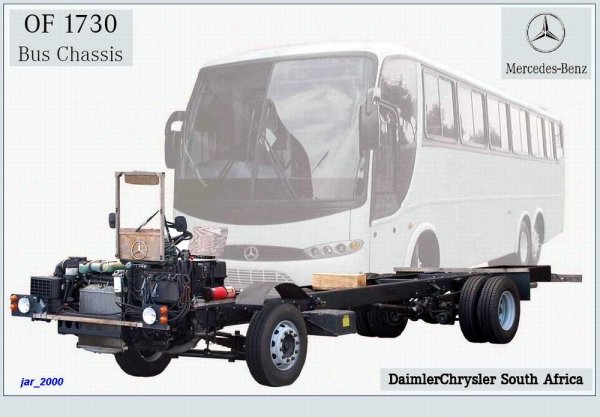Quote:
Originally Posted by ssdubai  ...
The suspension is just one part of the Luxury Bus Segment - The Monocoque body,Enhanced Driver Ergonomics all must be factored in for a Bus Chassis , probably that's where the Volvo bus scored a point.
Well may be it will end up a TBC like BRICS some day .  |
As such Volvo is not a Monocoque its again built on ladder frame only, with a luggage compartment. Even if built on Monocoque platform it need not have a better suspension compared to ladder frame ones.
Kindly recall Innova is built on a ladder frame and I need not elaborate much on its handling and suspension.
Quote:
Originally Posted by silversteed  ..
FYI, before Volvo started its operations as a bus maker in India, there were many inter-city buses. I can recollect Akbar travels, Supaa, No.1 Air etc. They were using AshLey chassis with air suspension. I doubt if they were the 12M chassis, and I've even heard people say that they were built on truck chassis. Ride was not so bad. I'd once visited Mahabalipuram and a few other places as a one-day sightseeing trip, in a tourist bus, sometime in 2001. IIRC, the operator's name was Geethalayam (and the bus had some KA-xxx-1111 registration). The ride was good, despite being an oldschool leyland. Back-breaking buses were there, but AL and TM did have comfortable buses too. |
All they were Viking only. In fact Suppa still uses only Viking with iT09 coach.
Quote:
Originally Posted by silversteed  ..This "True Bus Chassis" is only hogwash, just like some toothpaste brand comparing itself with an "ordinary" toothpaste.
I find the air suspension in newer buses more stiff, compared to some of the old 'Air Bus'es. I've read that these days they make the bellows with harder materials to increase their lifespan by compromising ride quality. This is true for all buses fitted with air suspension, including Volvos
Some MBA who specialised in Marketing would've searched for a catchy phrase to lure bus owners. And the result is this "True bus chassis". |
The use of truck chassis for building bus - its to be read as same chassis with same suspension and same stiffness, was obsoleted some 25 years back atleast. COmet was the chassis from Leyland which was used for both bus and chassis. After the Viking platform was enlarged - with different wheel base, power train options and improved spring stiffness (with less number of leafs as well), the era of bus on truck chassis changed completely.
This is the truth in Indian bus industry.
Later advancements have come in leaf spring itself, termed as Weveller or rubber ended leaf. This shift was great as there were a good difference in ride quality. Then the paradigm shift was to air suspension. But even after this its still termed as Truck chassis.
Actually its the other way around. For several white goods applications like scooter carrier, egg and chicken carrier bus chassis is used, as they offer fairly better suspension leading to reduced transit damage.
So its no surprise that tomorrow some body comes and tells, we are offering true truck chassis with right aggregates and proper suspension as against the
bus chassis which is used in India so long.

Quote:
Originally Posted by Sridhar K  +1. IIRC, KPN introduced airsuspensions on their TVS build buses (rear only) in the late 90s when rest of India was moving the so called hi-tech bus bodies with regular suspension. These KPN buses as "Pneu-Ride" and *brake boosters/ABS - can't recollect exactly" stickers on their rear glass. .... |
Quote:
Originally Posted by pypkmsrikanth  These Air buses came in around 1995-96. I remember in one of the articles in Ananda Vikatan K P Natarajan claimed that they would be able to take the bus from Trichy to Madurai with a bowl of water open and not a drop would spill out, though a touch exagarated there but was true in terms of the ride quality. . |
Yes, KPN was the pioneer in introducing newer technologies. They were the first to use the term AIR BUS( as early as mid 90's), big and bold indicating that they are with air suspension. Later this became the norm of the Intercity transportation.
Now they have converted all their buses to 100% air (both front and rear), in-spite of the fact that, it costs ~1.5 lks for each axle. They use a little stiffer springs compared to regular ones.
Apart from this they are now trying Automatic transmissions in their buses, purely to reduce the driver fatigue. They get a mileage penalty of min 15%, but still they are increasing the Automatic fleet size only. Total fleet size as of now is ~ 10 (Including Leymatic and Allission ) and they are likely to induct Volvo i shift in near future for 4 coaches.
 (1)
Thanks
(1)
Thanks
 (1)
Thanks
(1)
Thanks
 (1)
Thanks
(1)
Thanks






 Yes i do feel the same about this terminology .
Yes i do feel the same about this terminology .

